Everything You Need to Know About Bed Bugs
We are all familiar with the infamous bed bugs and do everything in our power to keep them out of our homes. The good news is Preferred Pest Control’s bed bug extermination services will help you fight against these home invaders. Our experts are going to tell you everything you need to know when it comes to examining your home for bed bugs, identifying them, bed bug treatments and best practices to help you prevent these critters from ever entering your home.
Quick Links to Learn More About Bed Bugs
What Bed Bugs Look Like Signs of Bed Bugs What Causes Bed Bugs Preventing Bed Bugs Bed Bug Detection Dogs Bed Bug Bites DIY Bed Bug Control Bed Bug Treatments After Bed Bug Treatment Bed Bugs While Traveling Commercial Extermination

If you’re ever unsure of whether or not you’re rooming with an infestation, contact Preferred Pest Control and our bed bug detection canines will sniff them out for you. Our leading bed bug dogs, Scout and Max, have undergone years of intense training and detection work, which has earned them certifications from the distinguished World Detector Dog Organization (WDDO). Residents of the Greater Des Moines metro can count on Scout and Max to thoroughly investigate homes or businesses for bed bugs and help eliminate the problem.
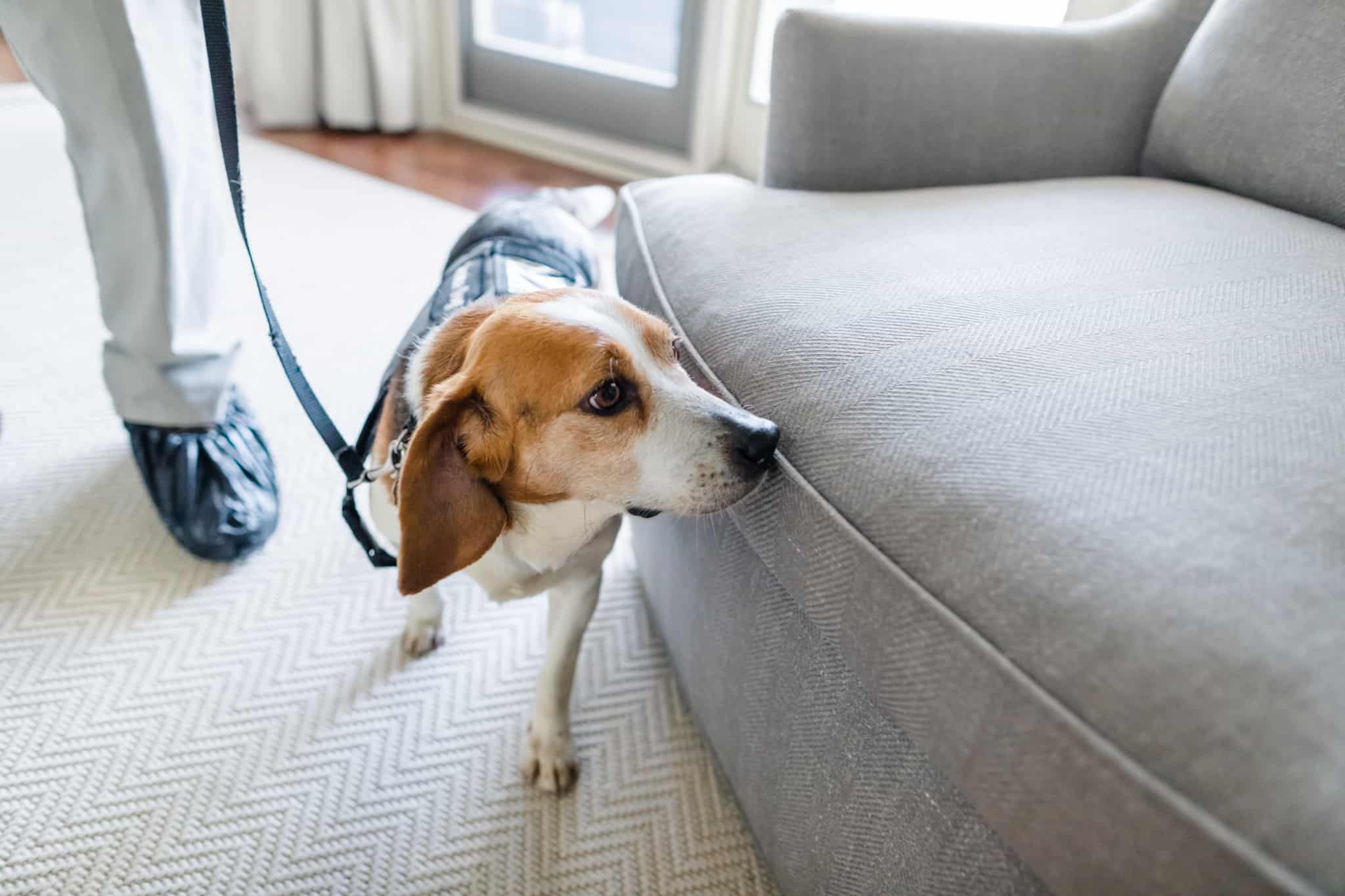
If you're not sure if you have bed bugs and are in need of a bed bug inspection, get in touch with our team. We'll send our bed bug detection dogs out to identify if there's a bed bug problem and take action if treatments are necessary. If bed bugs have been spotted in the home and you're looking for professional bed bug extermination services, contact Preferred Pest Control right away!
Schedule An Appointment
What do bed bugs look like?
At only 1/4 inch in size, adult bed bugs easily sneak into our homes without us ever noticing. If you happen to stumble upon one of them in your home, you can refer to their reddish-brown color and oval shape for
identification. Being able to identify bed bugs is important because once they get inside, they can rapidly reproduce and spread, forming aggregation sites, or clusters, on furniture and in beds. Take the time to familiarize yourself with the bed bug stages below so you can feel confident when identifying these creepy crawlers, no matter what stage of the bed bug life cycle.
Bed Bug Stages
While their lifespan is brief, there are five bed bug stages, or molts, they go through before reaching adulthood, each requiring a blood meal.
- Egg: The female bed bug will lay one to five eggs per day and between 200 and 500 in her life. Bed bug eggs are white and oval-shaped, typically placed in cracks and crevices.
- 1st Stage: It takes about one week for bed bug eggs to hatch. Once hatched, the nymph will waste no time searching for a blood meal to start feeding.
- 2nd Stage: After its first molt, the bed bug reaches the second stage of growth and the nymph is typically around 2 mm long.
- 3rd Stage: Once the bed bug has gone through two molts, it becomes a 3rd stage nymph and averages around 2.5 mm long.
- 4th Stage: A 4th stage nymph is around 3 mm long.
- 5th Stage: This is the final bed bug stage. They typically reach 4.5 mm at this point.
- Adulthood: Bed bugs can live up to a year, however the average lifespan of a bed bug is around 10 months with sufficient food supply and consistent room temperature.
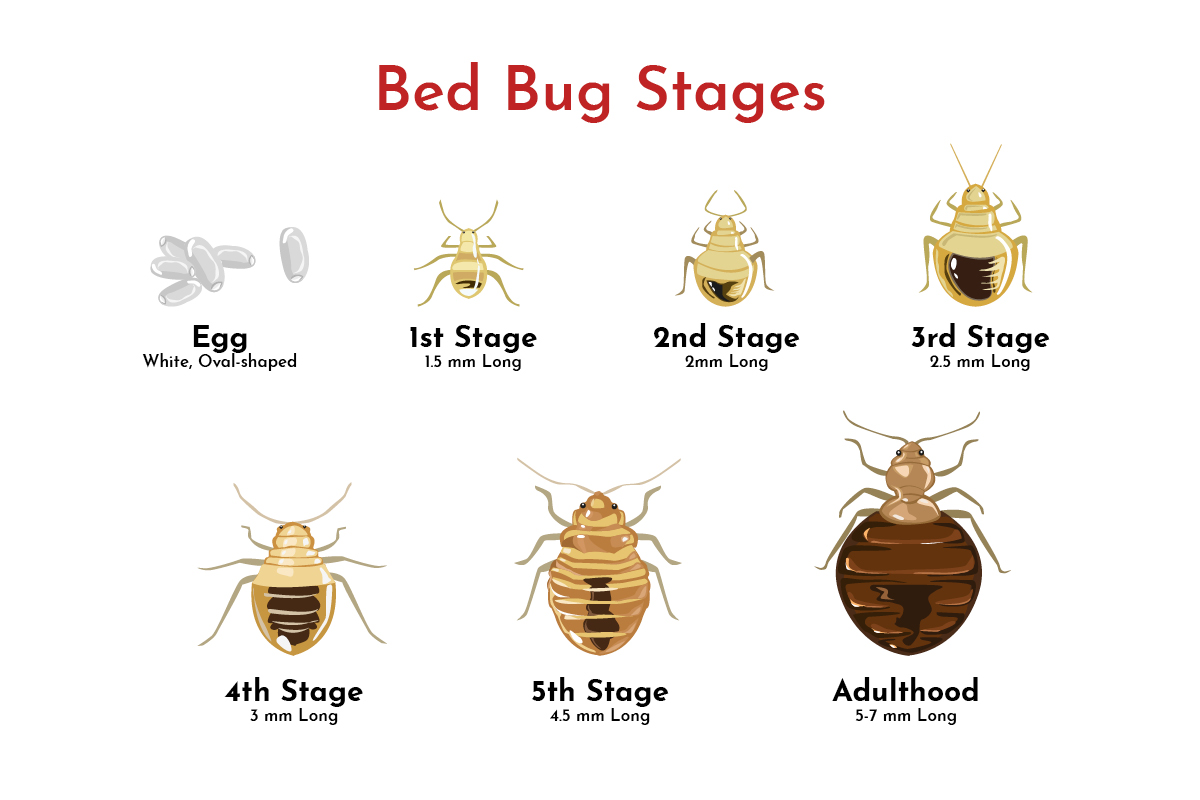
Can you see bed bugs?
Bed bugs can be extremely small and most commonly nest in hard-to-notice areas of a home or building, however you can see bed bugs with the naked eye when they reach full maturity. There are a few obvious signs of a bed bug infestation, but actually seeing the bed bugs is the easiest way to know if you have a problem on your hands. Once noticed, bed bugs can easily be mistaken for a variety of other home invaders similar in appearance.
Bugs Mistaken For Bed Bugs
Discovering a bed bug infestation in your home is the first piece to the puzzle. You’ll want to make sure you know what you’re dealing with since bed bug treatments are very unique and require more preparation. Take a look at some of the other critters that often get mistaken for bed bugs:
- Cockroach Nymphs
- Ticks
- Mites
- Fleas
- Carpet Beetles

So, if all of these different pests look so closely alike, how can you tell if you have bed bugs? Well, bed bugs can leave behind some pretty unique and obvious signs that their presence is real. Unfortunately, they aren’t the most pleasant things to come across in your home.
Back to Quick Links
Signs of Bed Bugs
We’ve established that bed bugs are easily overlooked, especially when you don’t know what you're looking for. We’ve gone over identifying these home invaders, now we want to highlight some of the first signs of bed bugs so that you can examine your home for an infestation.
The First Signs of Bed Bugs
Bed bugs may be sneaky, but cleanliness is something they lack. This is just one of the reasons many of us fear sharing a bed with them. Keep an eye out for these signs of bed bugs in your home:
- Bed bugs are known for leaving reddish-black droppings or blood spots on bedding, furniture, wall hangings and more. After bed bugs feed, they tend to return to their aggregation site, or “nest,” where they will defecate, leaving brown and black stains of excrement behind.
- After each molting stage bed bugs go through, their skin gets left behind. This is referred to as a cast skin and is often found in large numbers on beds and floors.
- Bed bugs feed on warm blood, making humans convenient food sources. Bed bug bites are a clear sign you’re dealing with these unwanted guests. Their bites may appear as small, red welts on the body and are often found upon waking up. If you cannot see other signs of bed bugs, it is important to seek a medical professional to determine if you are experiencing actual bites or some other type of medical condition before concluding that you have actual bed bug bites.
Back to Quick Links Bed Bug Detection Dogs
What causes bed bugs in your house?
Traveling is the number one reason for bed bugs making their way into our homes. Other causes may include accidental introduction through used furniture and also guests who visit your home that have bed bugs on themselves or their belongings. It is a common misconception that poor hygiene attracts bed bugs. Although clutter does make it easier for them to go unnoticed and provides additional nesting sites, it is not something that causes bed bugs.
So what are bed bugs attracted to? The answer is humans! Bed bugs feed on warm blood, making humans a sustainable food source, and a home with the perfect temperature and environment for these critters to thrive. In rare instances bed bugs have been known to seek blood meals from pets.
Bed bugs are not a seasonal pest - they are active indoors year round. Bed bugs are most active during April through November when the temperatures are warmer, but infestations can occur any time of year. Some common places bed bugs are found within homes are bed mattresses, bedding, cracks and crevices, walls, picture frames, and furniture such as night stands, couches and chairs. But no need to panic! Read on to find out how you can prevent bed bugs from ever considering your home as a cozy shelter they can settle down in.
Back to Quick Links
Preventing Bed Bugs
How to Avoid Bed Bugs
Bed bugs spread very quickly and can become prevalent house guests before you know it. Getting rid of them is no easy task and can turn into a very lengthy process. Preventing bed bugs is mainly done through precautionary practices. After traveling, check for bed bugs on clothes, bags and other belongings in case you might have any clinging on for a ride.
Always be sure to wash and dry clothes and bedding regularly on high heat. Don’t forget about furniture - it's usually the most neglected furniture where we find aggregation sites forming. Inspect upholstered furniture with an LED flashlight to look for bed bugs, droppings, cast skins and eggs. Vacuuming and picking up any clutter can make it harder for bed bugs to find hiding spots in your home as well. Knowing their common nesting areas will help you to better examine for an infestation in your home.
If you do spot an infestation, it is important to act quickly! Once one bed bug finds a suitable place to nest, it can release pheromones to its friends telling them to join. This can make them very difficult to eliminate which is why taking the steps to prevent bed bugs from becoming a problem can save you time and trouble trying to solve it.
How to Prevent Bed Bugs From Spreading
You’ve come across an aggregation site in your home, now how do you keep it from spreading to other areas in the house? Check out these effective practices you can incorporate to ensure bed bug clusters stay put until they can be removed. Before getting into your options, it’s important to take the time to think through your method of choice. Do not use aerosol bug bombs or other over-the-counter insecticides. You could end up making the problem worse by spreading the infestation to other areas of your home. Similarly, there is normally no need to throw away infested clothing, furniture and mattresses after our treatment. We recommend not disposing of these items due to the possibility of spreading the bed bugs throughout your home during the removal process.
Cleaning up clutter is one of the best things you can do. It will eliminate the number of potential hiding spots for bed bugs and increase the chances of you being able to detect an infestation. Be sure to regularly wash and dry bedding, clothes, blankets, and anything else that may have touched the floor or furniture. If you think it has been infested, high heat will kill any bed bugs and eggs when washing and drying. Utilizing professional bed bug services is truly the number one method that you can fully count on to complete the job as quickly and effectively as possible.
Back to Quick Links
Detecting Bed Bugs
Detecting bed bugs in your home is no easy task since these pests can be very small and good at staying hidden. Oftentimes, people won't know if they have bed bugs in their home until they notice bed bug bites. If homeowners are nervous these pests have invaded their home, Preferred Pest Control has the best bed bug detection method that could confirm an infestation: our bed bug detection dogs!
Bed Bug Detection Canines
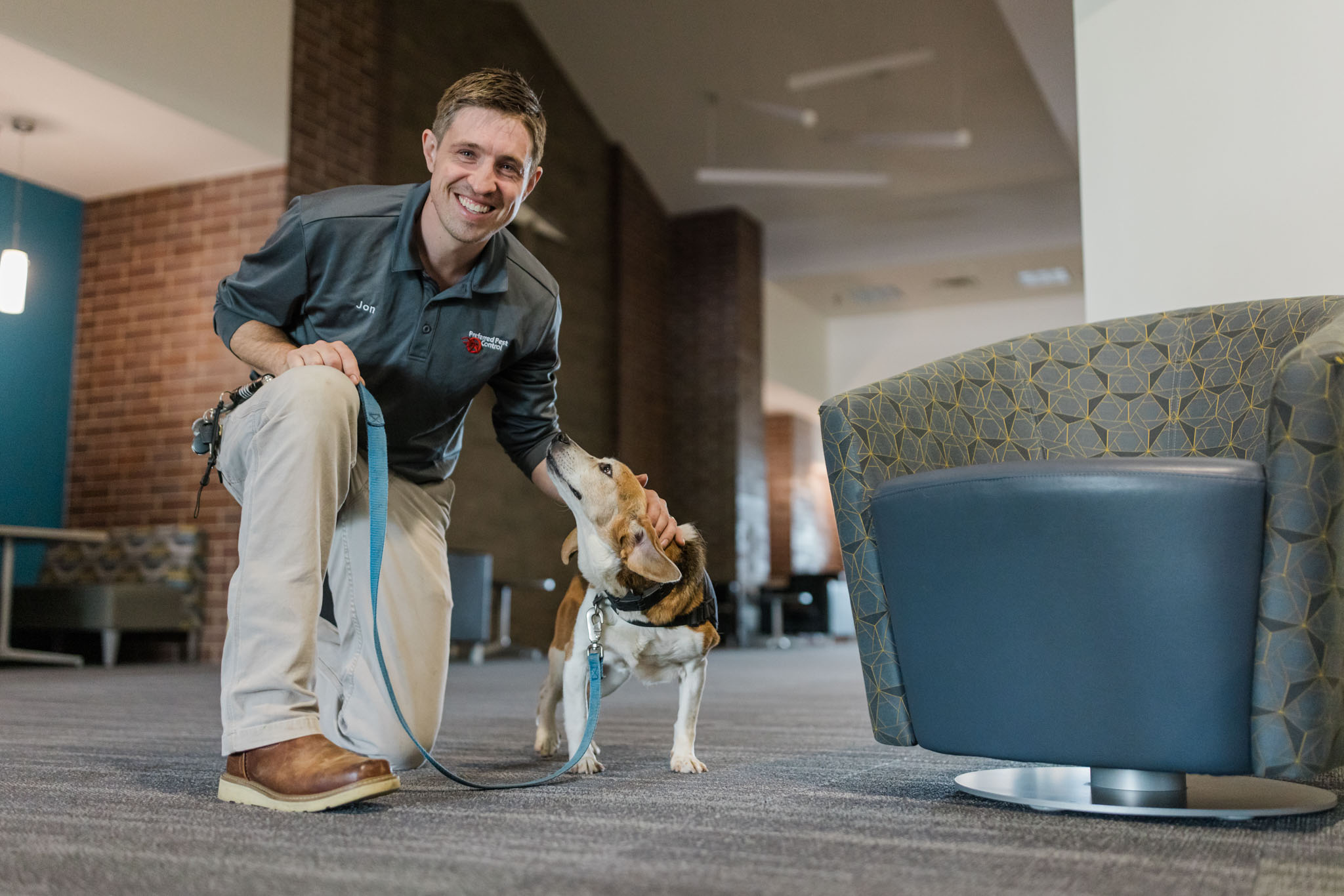
Bed bug detection dogs are similar to police canines – both are specifically trained to assist their trainer and search for a specific scent. They can be so effective that many bed bug detection canines are able to hunt down small aggregation sites, sometimes even one bed bug at a time! The best breeds for this position are bloodhounds because of their advanced sense of smell. They’re also intelligent and energetic when it comes to being trained, which is extremely important since these dogs have a very difficult job. Preferred Pest Control's highly trained bed bug detection canines are easily the most effective way to detect bed bugs in a home or business.
How accurate are bed bug dogs?
With a sense of smell 1,000 times greater than humans, dogs can sniff out the odor from bed bugs with up to a 95% accuracy rate. Preferred Pest Control is one of only a few nationally certified pest control companies in the Des Moines area to use bed bug detection canines. Since this is not a well-known practice, we often get asked how accurate our bed bug dogs are. Scout and Max have both earned certifications from the World Detector Dog Organization (WDDO), a recognized authority on detection dog certification and training. This certification is performed annually and can give our customers confidence that they are receiving the most accurate service for detecting the odor from bed bugs and viable eggs.
To earn this prestigious certification there are a couple different testing scenarios that are done as a double-blind test. This means when a dog and their handler are showcasing their bed bug detection skills, neither of them know where the bed bugs are located. Withholding this information from the trainer keeps the testing environment completely unbiased when they’re leading the canine through the area. If you sense an infestation on your hands, don’t hesitate to call Preferred Pest Control’s detection canine team for a professional bed bug exterminator at (515) 276-7277.
Back to Quick Links Schedule An Appointment
Bed Bug Bites
Blood being the only food source for bed bugs, bites are actually one of the most common ways people discover an invasion in their home. Bed bug bites are most commonly found in the morning since mattresses and bedding are such a prime nesting area for these critters. Their bites typically leave little red welts in clusters on exposed skin that can cause an itchy rash. Some people describe the itch as similar to a mosquito bite, but worse. The good news is that simply applying an over-the-counter cream to the bites may reduce itchiness and swelling. Bed bug bites typically take no longer than a couple of weeks to go away.
Back to Quick Links
DIY Bed Bug Treatment
Can you get rid of bed bugs on your own?
There are many methods that homeowners use to get rid of bed bugs on their own, but we’ve seen many cases first-hand where DIY bed bug treatments are not successful and very ineffective for getting rid of bed bugs. For the most beneficial long-term solution, it’s best to contact a professional.
- Diatomaceous Earth (DE) is NOT a bed bug repellent. It’s formed of crushed up fossilized remains from diatoms. This could be used after early detection. It will not eliminate an infestation, but can prevent bed bugs from spreading and kill them in small numbers. Place some in the infested areas such as cracks and crevices and wait for the results.
- Ultrasonic Devices are something you may have heard of or tried before. If so, the effect may have fallen short of your expectations. Our experts do not recommend these ultrasonic pest control devices due to their low success rate. The high frequency noise these devices produce to ward off pests can also bother house pets.
- Bug Bombs are believed by many to be a great way to get pesticide thoroughly spread throughout your home, but they are notorious for not working. Bug bombs work better for flying insects. When dealing with a bed bug problem, don’t bother trying them because the spray will not get into cracks and crevices where bed bugs hide. They can also be hazardous as pesticide spray is flammable, and can actually make your bed bug problem worse by spreading the infestation to other parts of your house. It’s important you follow the directions on the spray can if you choose to take this treatment route.
- Talcum Powder & Baking Soda are both believed to kill off bed bugs. Many believe sprinkling it in infested areas, will soak up the moisture from the bed bugs’ shells, eventually dehydrating and killing them. Similar to diatomaceous earth, this would turn into a time-consuming process that may prevent bed bugs from spreading, but it will not get rid of bed bugs.
- Vacuuming and also using a vacuum attachment on your baseboards, bed frames, headboards to remove bed bugs and their eggs from cracks and crevices can significantly reduce the number of bed bugs in your home in infested areas. Regularly vacuuming your floors will not prevent you from getting bed bugs, but it will reduce numbers in areas where bed bugs are hiding. Obviously, when you’re done vacuuming up the bed bugs, it is essential to remove the bag and dispose of it away from the home to prevent them from returning.
Overall, DIY bed bug treatment methods tend to have inconsistent success, if any, depending on the case. But, there’s one treatment method that is guaranteed to succeed – turning to the pros. Don’t hesitate to contact Preferred Pest Control if you have a bed bug infestation on your hands. Our experts have decades of experience and education, and are equipped to get rid of these critters quickly.
Back to Quick Links
Best Bed Bug Treatments
Preferred Pest Control’s Aprehend® Method is the Best Bed Bug Treatment
If it’s confirmed there are bed bugs in your house, our pest control company will apply our Aprehend® treatment in bed bug infested areas to get rid of bed bug problems. Aprehend® is a natural bio-pesticide solution. Here's the process we follow for our latest bed bug treatment:
1. Application of an odorless bio-pesticide. This bio-pesticide solution from Aprehend® is sprayed in narrow bands where bed bugs are known to walk. Once the bed bugs come in contact with the bio-pesticide, the fungal spores will start to penetrate the skin and kill the bed bug in 3-7 days. Before they know it, the infested bug will carry the spores back to their nest, infecting other bed bugs in the colony. This is a collateral damage solution to ending bed bugs that can last up to 3 months. Typically only one application is needed to get rid of bed bugs, making it very effective and much less of a time-consuming hassle for homeowners compared to a heat treatment or other types of treatments.
2. Implementation of a dry steam to infested areas. Steam kills bed bugs and their eggs on contact. Bed frames, mattresses, box springs, nightstands, picture frames, drapes and any other area where bed bugs may be harboring are areas we typically treat with steam.
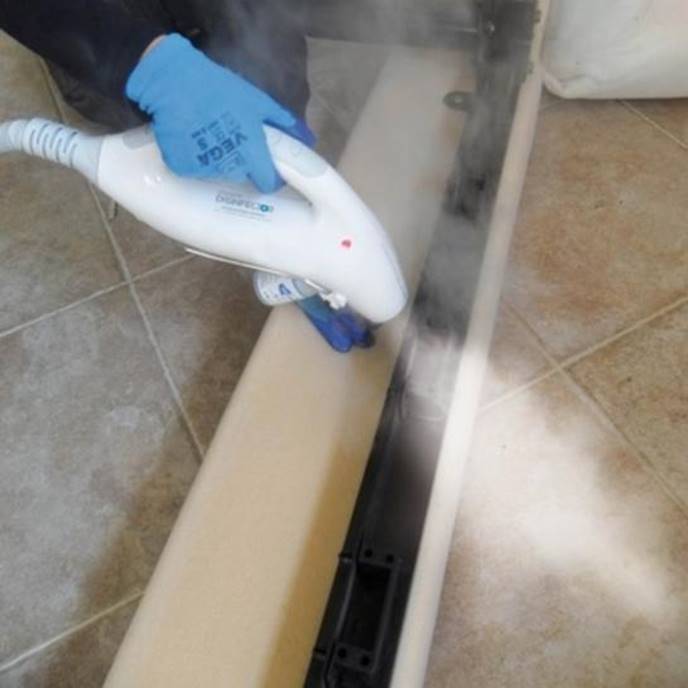
3. Installation of bed bug proof mattress and box spring encasement in infested rooms. The encasements are made of an impermeable material that is designed to keep bed bugs out of your mattress and box spring. If any bed bugs have already made it to your mattress or box spring, the encasement will keep them inside and away from you.
4. Utilization of bed bug traps under each leg of infested beds. These traps are designed to capture bed bugs that are attempting to climb into your bed. This method is very effective in both giving immediate relief from bed bugs and acting as a monitoring device to ensure there is no more bed bug activity.
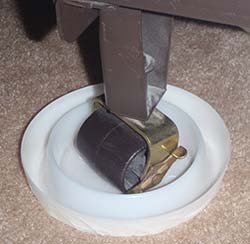
5. Removal of live and dead bed bugs, cast skins and eggs with a HEPA filtration vacuum. This removal allows us to increase the effectiveness of our treatment by immediately removing active bed bugs and their eggs using a high powered vacuum designed to dislodge bed bugs from their hiding spots.
6. Coordination to schedule a 30-day follow-up inspection. To ensure that our Aprehend® treatment has eliminated the bed bugs, your bed bug technician will return to check the progress after your treatment. If any signs of live activity are observed, active steps will be taken to remove any remaining bed bugs.
Schedule An Appointment
How effective is bed bug heat treatment?
Killing eggs, nymphs and adult bed bugs, heat treatments can be successful but sometimes spread bed bugs to other areas of the house or to other apartments. Also, heat treatments require you to be out of your home for most of the day and are much more invasive due to the need to get the heat inside of every clothing item, furniture and beds. It takes as little as a couple of minutes for the 120 degrees Fahrenheit to do the job, but it can take 8-12 hours of sustained heat to reach every area that has bed bugs. While this heat won’t damage everything in your home, there are some items that need to be removed before this process. Pest professionals should provide a pre- and post-treatment checklist for anyone signed up for this service.
Many people ask us if bed bug heat treatment is harmful. It is actually a chemical-free treatment option that is environmentally friendly, but does have limitations because there is no residual chemical to prevent bed bugs if they return. Preferred Pest Control used to utilize heat treatments, however, after researching new and more effective methods, our team has switched to Aprehend® to offer the latest bed bug treatments.
Back to Quick Links
What to Expect After Bed Bug Treatment
With a professional bed bug treatment, you can expect all bed bugs, eggs and nymphs to be dead after the bed bugs have been affected by the extermination solutions. However, for other options and any DIY bed bug treatments, you can expect to see survivors. Some treatments that are less effective need to be done multiple times to fully eradicate the problem. Preferred Pest Control’s Aprehend® bed bug treatment uses fungal spores to kill the bed bugs, and, in most cases, the pests are completely eradicated at our 30-day inspection. If for some reason there are survivors still present, our technicians work to get rid of all bed bugs. Ask your pest control provider what you can expect when dealing with an infestation in your home, both during and after the bed bug treatment.
Do bed bugs come back after treatment?
Many people believe bed bugs come back after treatment or it has been ineffective, when really they're just noticing more of the bed bugs because they are no longer hiding. While treatments will kill the bed bug population, the aftermath still needs to be cleaned up. It is important to wash and dry all bedding on high heat and vacuum thoroughly to pick up and remove any leftover nymphs and eggs. Be sure to empty the vacuum outdoors and away from your property to avoid any critters making their way back in your home if there were survivors.
Back to Quick Links
Bed Bugs While Traveling
Hotels and airports can be some of the largest culprits of an undetected bed bug infestation. It’s important to remember the best ways to avoid bed bugs while traveling so you don’t accidentally bring them home with you. Our team notices an increase in bed bug infestations after spring break season or during the winter when most families plan to temporarily escape the cold with a vacation..
Checking For Bed Bugs in Hotels
Obviously one of the first places you should look for bed bugs in hotels is in the bed and under the covers. We recommend pulling up the sheets in each of the four corners and checking along the edges of the mattress for signs of bed bugs - dark stains, eggs or live bed bugs. These pests can also hide along the walls, so check along the baseboards and around the headboard of the bed. If you notice anything suspicious, it's best to alert management so they can resolve the issue.
How to Prevent Bed Bugs in Luggage
Bed bugs are notorious for clinging to luggage and clothes which is why traveling people are easily the most common form of transportation for them, and often their ticket into your home. If you ever stay in a hotel or motel room, flip up the sheets and check your mattress for signs of bed bugs. If you notice small, brownish-red stains or small insects, notify the manager and ask them to check for bed bugs in the hotel room.
Additionally, it is crucial to place your belongings off the floor and bed. This is an effective practice to avoid bringing them back with you. Refer to the common signs of an infestation above so you know how to check for bed bugs in hotel rooms or any other area you and your loved ones stay in while away, as these are some of their favorite hangout spots.
Back to Quick Links
Commercial Bed Bug Extermination
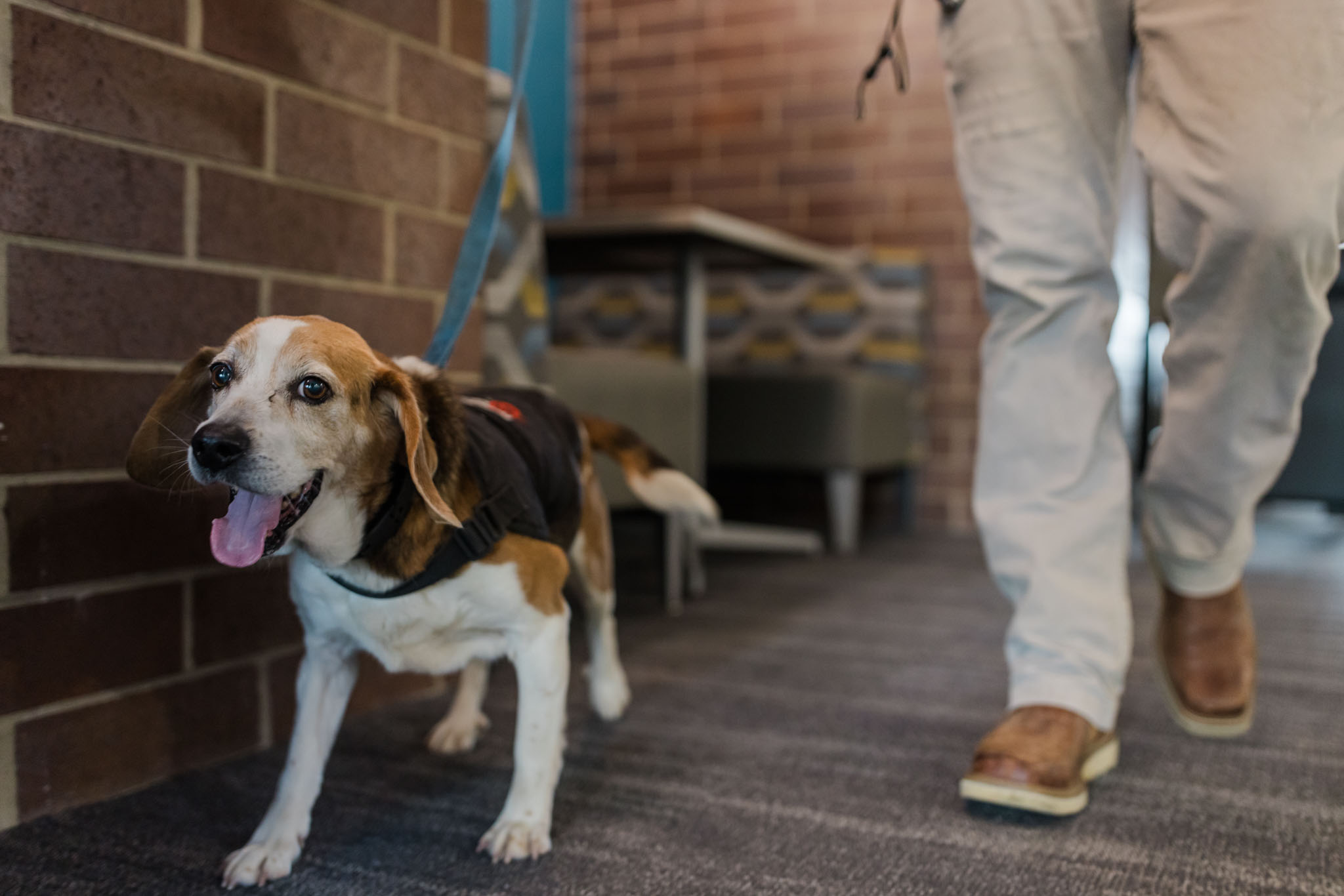
When it comes to commercial buildings such as hotels and apartments, the chances of bed bug infestations become much higher. The high activity of travelers and guests make multi-unit buildings very vulnerable to infestations. Also, bed bugs can quickly spread to surrounding units when just one apartment or hotel room has bed bugs. These pests have a plethora of opportunities to sneak in and even more hiding spots to choose from.
With the opportunity for increased exposure and the reputation of your business on the line, there are pest protocols multi-unit buildings must follow. We recommend that managers follow the Best Management Practices for Bed Bugs established by the National Pest Management Association for proactive bed bug control and inspections to ensure they stay on top of this rising issue
Commercial Bed Bug Treatments & Removal
At Preferred Pest Control, we offer commercial bed bug treatments and regular inspections. Our trained technicians perform effective treatment methods as soon as possible to eliminate the problem at the source before it can spread and cause building-wide issues. If there is an infested area, we will follow the best bed bug treatment methods used in our Aprehend® bed bug services.
We will not only treat the suspected area of infestation, but the rooms and areas around it as well to ensure there are no stragglers left behind. Not only do our professional exterminators perform commercial bed bug removal, but full inspection of the building as well in order to avoid any habits that can lead to a future infestation.
Back to Quick Links Schedule An Appointment
Contact Our Bed Bug Pest Control Company in Des Moines
Congratulations! Now you’re an expert when it comes to the persistent, unwanted house guests we call bed bugs. Rest easy knowing that you can identify these critters and know the signs to effectively examine for an infestation.
For an effective treatment and quick bed bug removal process, contact our professional bed bug exterminators to receive a pest control service that you can rely on. You can reach us at 515-276-7277 with questions or if you’re looking for more information.
Schedule An Appointment Contact Our Team
Image Credits